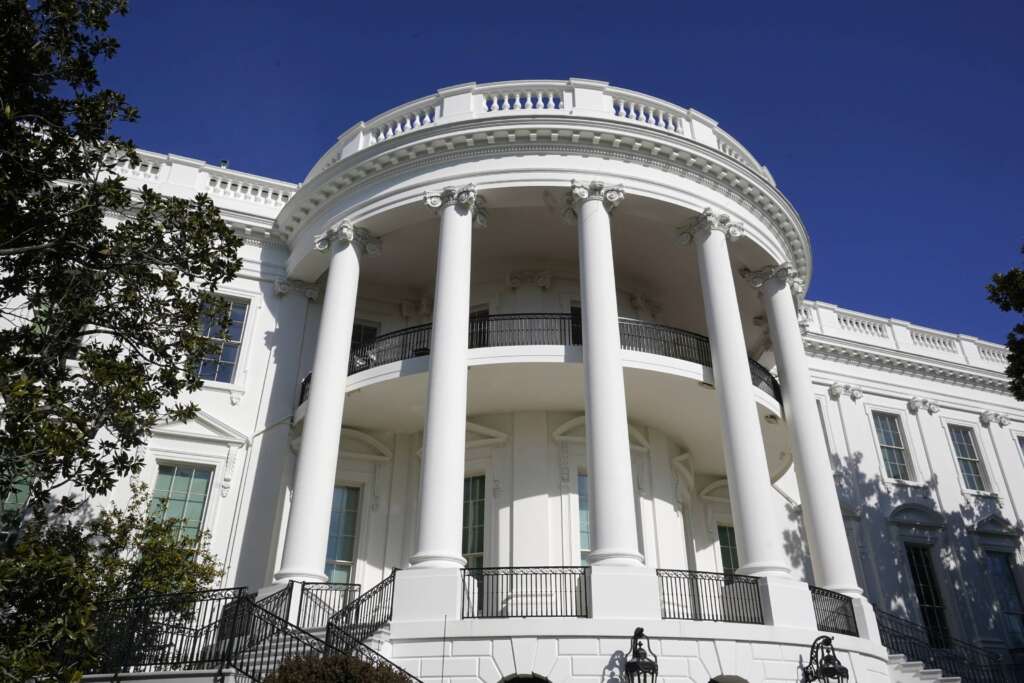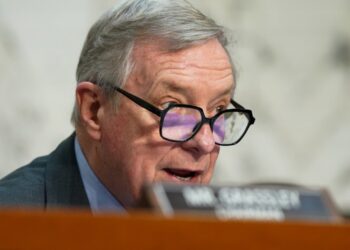
Just days ago, the White House came out with a national security memorandum devoted to artificial intelligence. It’s a catch-all for trying to keep the United States ahead of A-I developments in what the memo calls the new frontier. For analysis, the Federal Drive with Tom Temin spoke with the Executive Vice President for Policy at the Professional Services Council, Stephanie Kostro.
Interview transcript:
Stephanie Kostro They’re going to need a lot of industry engagement on this. You don’t have AI expertise resident in the policy shops of the various departments, and certainly not the White House. And so you really do need to get to the technical experts on this one. And they mentioned contractors a few times in this memo, which I’m grateful for that, that they were even mentioned. But there needs to be more acknowledgment that industry has solutions that they can offer. It’s not all going to be done by strategy and policy. At some point, the rubber meets the road and the technical expertise needs to come into the conversation.
Tom Temin In some ways, it seems like a call to action for various agencies to do rulemaking. I mean, in their summary, it says the [National Security Memorandum] directs actions to improve the security and diversity of chip supply chains. Well, the government isn’t making chip supply chains.
Stephanie Kostro Well, that’s exactly right. I think as as we heard from the national economic adviser, they’re going to focus on semiconductors, infrastructure, clean energy. You’ve got workforce mentioned in here. All of these are essential elements. But as we move forward, they talk about public investment. But private investment is going to be critical here. And anything they can do to to work on opportunities, where industry knows where we’re going. They know the governance structure around it and they can apply their solutions in a way that makes sense, is what we’re looking for. And I think part of that, as I said earlier, is about getting industry involved and figuring out what’s in the art of the possible here.
Tom Temin Yes. So services contractors, the vast bulk of the people that your organization represents, the Professional Services Council. What do you see for them specifically? Because this seems directed at chip manufacturers.
Stephanie Kostro You go back to the AI infrastructure piece of it, and semiconductors and chips are really, really important. We’ve got a lot of statute and some regulation on this area specifically. But for us as service providers, we’re all about the workforce, right? We’re about the labor that’s needed. So it’s research and development, it’s testing and evaluation, it’s maintenance of systems, etc., and not just that piece of it, but the consulting side. The consulting piece where you’ve got individuals who are technical experts who can advise the government. We’re watching this part very, very closely because workforce is the bread and butter of the services industry. And if they’re going to in the government start to create a policy that affects the workforce, that could expand the workforce, we’re all in favor of that. But it needs to be done in cooperation with industry.
Tom Temin Right. It sounds as if someone working in artificial intelligence is going to pretty soon need national security clearance.
Stephanie Kostro Well, I mean, keep in mind, this is a national security memo on AI, and it accompanied an earlier OMB memo that talked about transparency, trustworthiness, safe and reliable, responsible AI that was for the broader economy. This is a national security memo. So it is looking at AI through the prism of our national security missions. So that’s the Department of Defense, State Department, [Department of] Homeland Security, the intelligence community, etc. And so as we talk through the implications of AI, we’ve got to also know what are we going to use AI for in this space? Are we going to be talking about battlefield decision making and the use of AI in that? Or are we going to talk about the use of AI in the procurement process that you and I, Tom, often talk about in terms of requests for proposals, statements of work, evaluation of proposals. So there there’s a whole spectrum of opportunity here. So this is a national security memo that has dozens of tasks for the executive branch. And the agencies to to undertake. I just hope that they do it in cooperation with industry.
Tom Temin We’re speaking with Stephanie Kostro. She is executive vice president for policy at the Professional Services Council. And there’s the establishment in particular of a AI safety institute. I guess that’s kind of like a federal underwriters laboratory for artificial intelligence. And even that, I think is going to need a lot of contractor or industry involvement, lest the institute not really know what’s going on and how to institute safety.
Stephanie Kostro Yeah, I’m looking forward to seeing how they actualize this AI Safety Institute. It designates the institute as what they’re calling the port of contact for industry to weigh in to what’s going on in the national security agencies. And so I’m looking forward to seeing how they realize that. And then one other area, Tom, that I wanted to make sure that we hit on because I mentioned [research and development] earlier. PSC and and hundreds of other organizations have been talking to folks in Congress about R&D tax credit. And I know this is a topic that you and I have talked about. You and my boss, David Berteau, PSC’s president and CEO, have talked about it. And this is something that goes back some seven years, back to the Tax Cuts and Jobs Act of 2017 and what that legislation did that became law. It eliminated an R&D tax credit that at the end of the day when when companies who are putting money into R&D can’t claim that as a credit on their taxes, they have less capital to reinvest in R&D. And if you look at some studies that were done even before this bill became a law, they estimated that about $4 billion annually is being lost in R&D. And that was in the first five years and after those first five years — so we are in that period now — we’re losing $10 billion a year in R&D. And so what we at PSC are doing on this front in particular is gauging the appetite of the current Congress in the next few months to finally move on this issue to reinstate the R&D tax credit that had been the law of the land since the 1950s. And it just changed in the last seven years to great detriment to the R&D world.
Tom Temin And this could be a stretch. But I’ve heard several companies of the nature that are members of the PSC say in recent months that before they deploy artificial intelligence to government agencies, they actually learn to use the AI on their own systems, their own financial systems, their own HR systems, whatever the case might be. And so the research and development that companies are doing is actually in their own applications for their own operations of AI, which that seems to almost have replaced the R&D they would otherwise do for eventual use in government contracts. Or am I seeing a stretch here?
Stephanie Kostro So I think most of what you’re saying is true. I think the R&D that we’re losing — companies still want to test out AI, they want to develop it to the extent that it’s usable in their day to day applications, and that is eventually for the benefit of the government. Because if it works in the company, it by some stretch will work for the government depending on what the government’s asking of it. The problem that I have with the R&D tax credit and the fact that they have to amortize these costs over five years is that it’s not just R&D dollars that you’re losing; you’re losing R&D jobs. And so it’s where are we creating this workforce’s expertise in AI? It’s not going to be in the companies that serve the government. It’s going to be in the companies in the broader economy that don’t do government work. And so as we start to think through labor implications of this national security memo, again, I go back to the fact that the workforce is the backbone of services companies, and we’ve got to make sure that they are focused on the right issue set, and AI is the wave of the future: emerging technologies, supercomputing, the whole ecosystem that can crop up around this. And what I’d love to see is R&D spent specifically on how to do that.
Copyright
© 2024 Federal News Network. All rights reserved. This website is not intended for users located within the European Economic Area.







